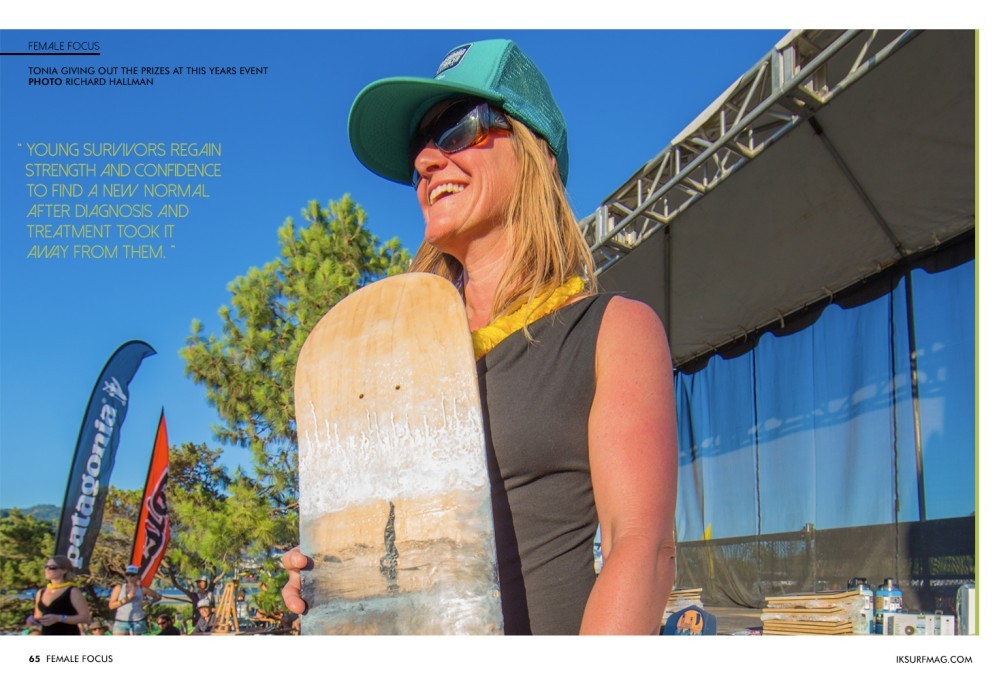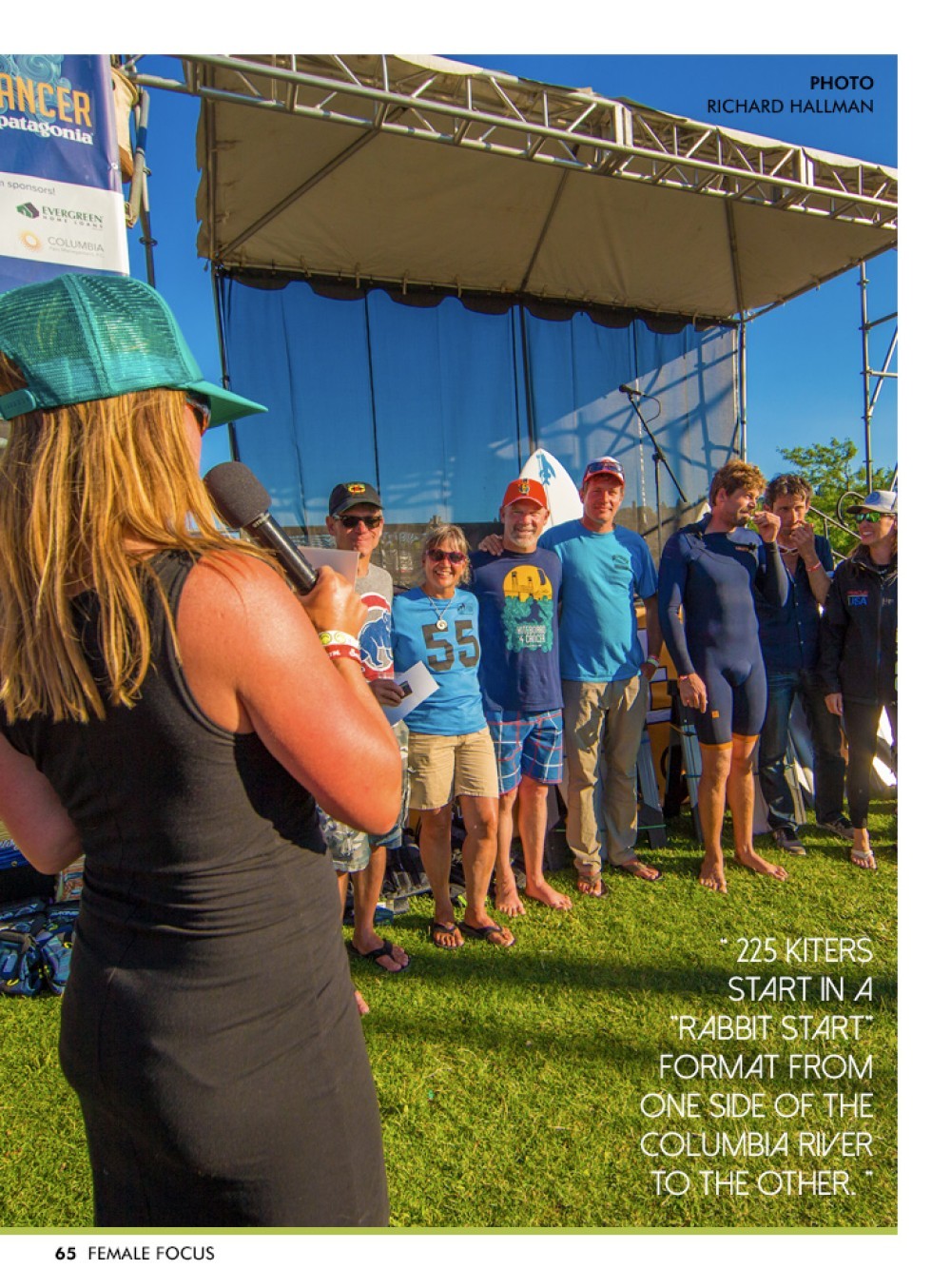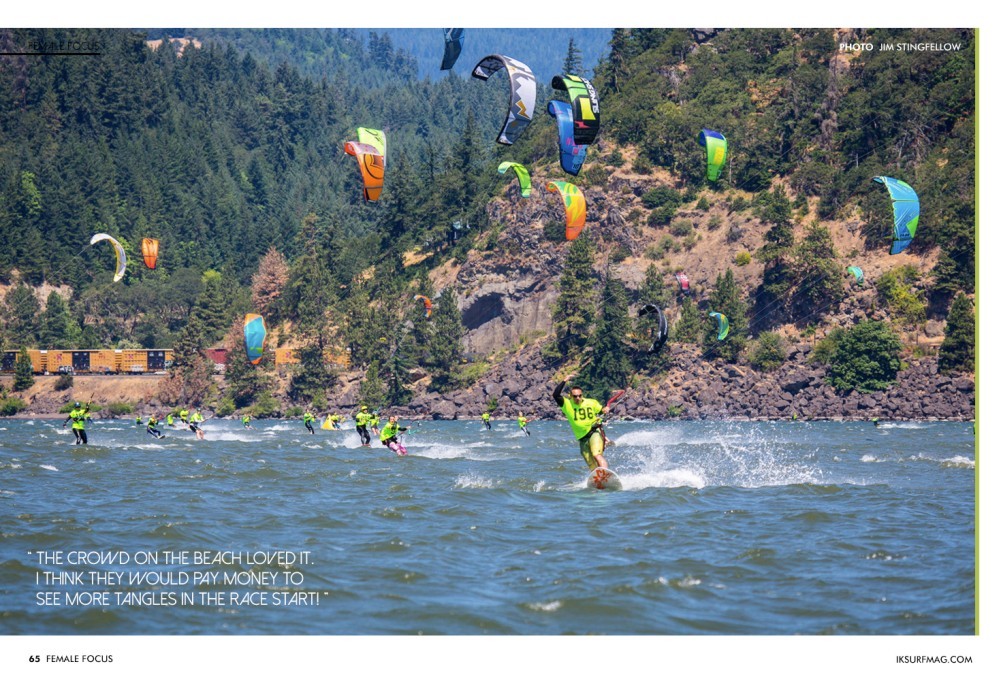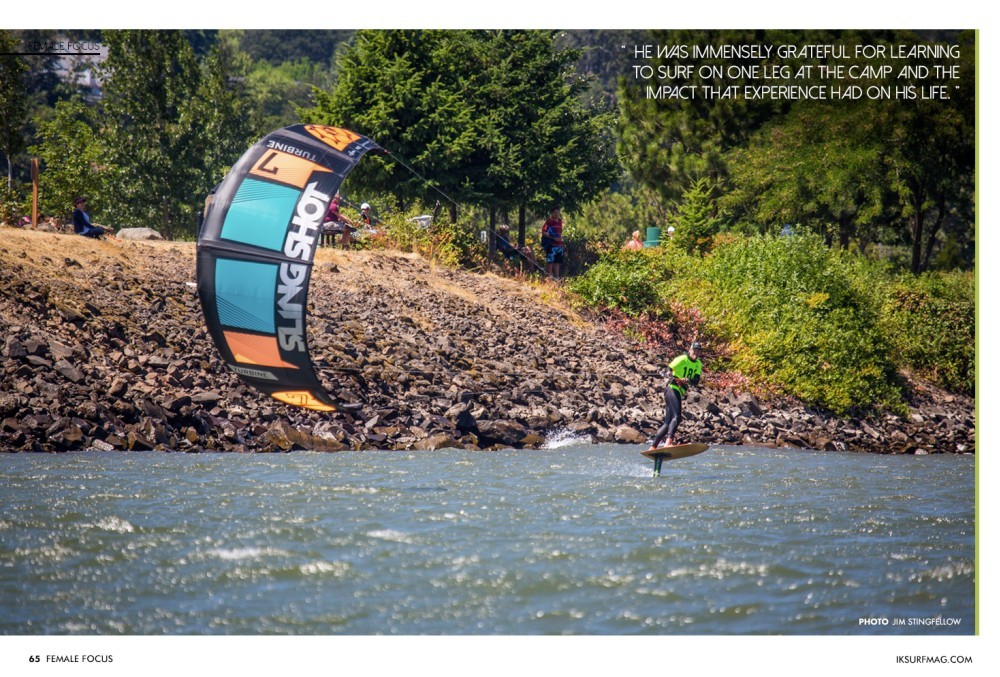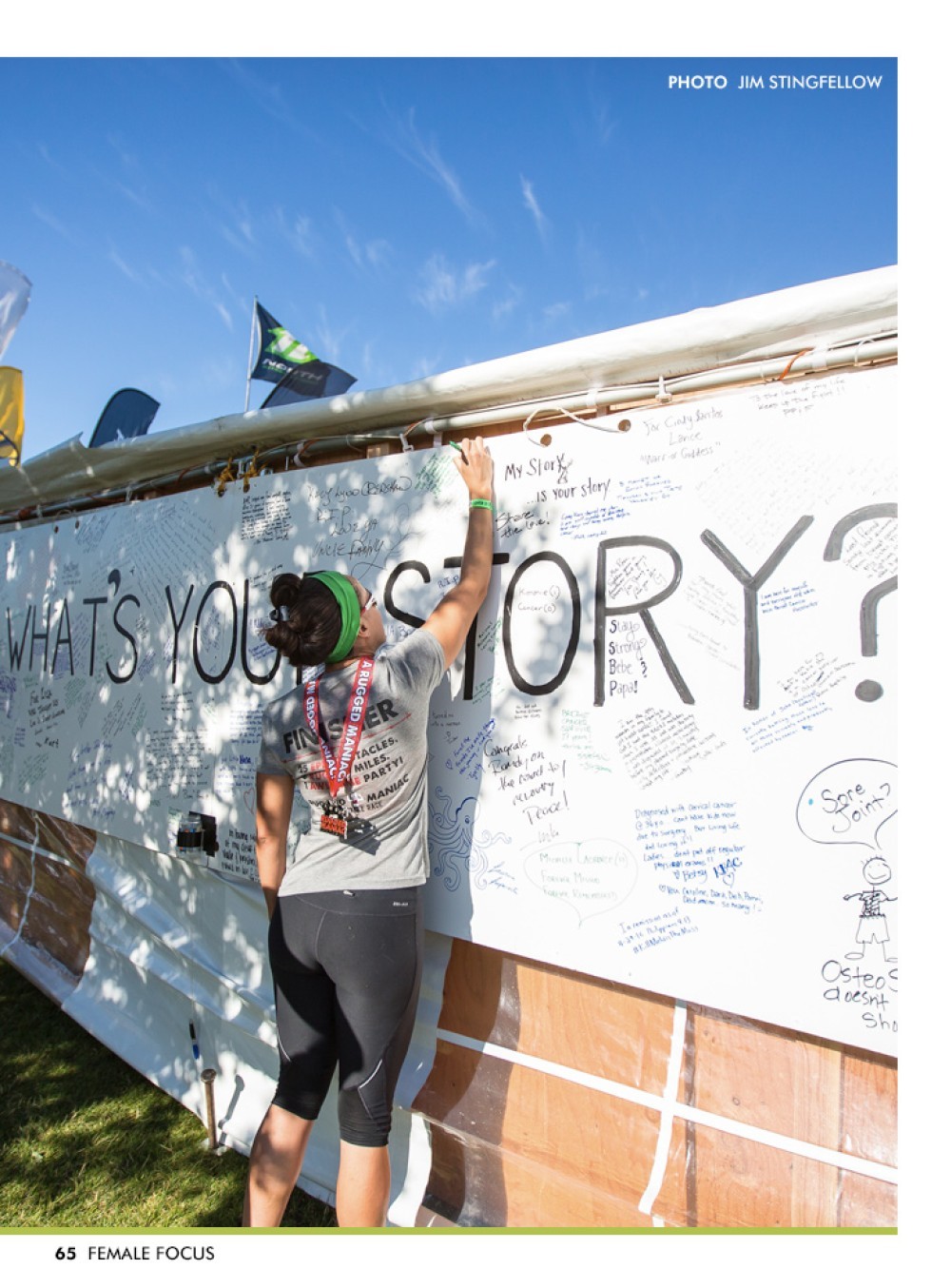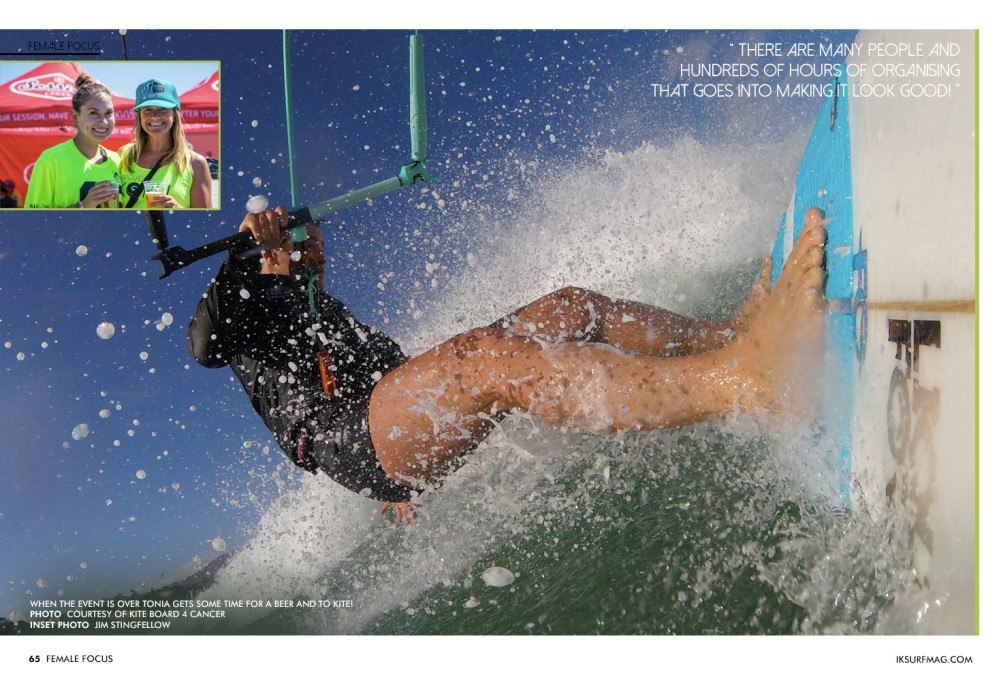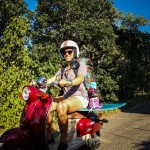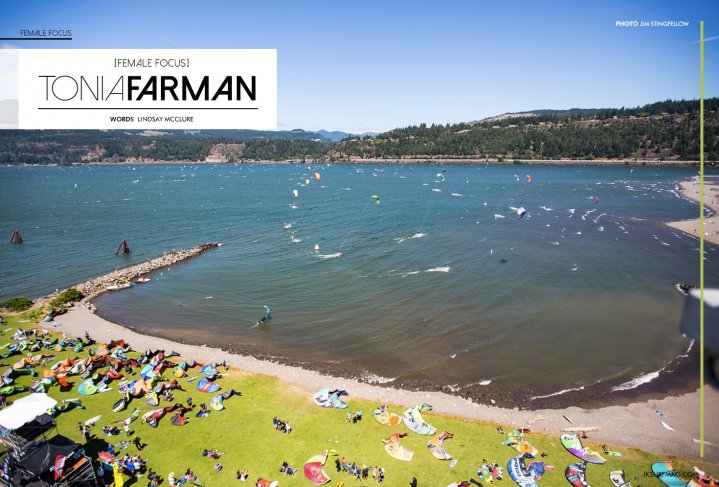
Female Focus - Tonia Farman
Issue 65 / Fri 20th Oct, 2017
Tonia Farman recognised that kiteboarding is more than just a sport. Kiting has the power to heal and to connect, which is why she started Kiteboarding 4 Cancer, an endurance race and fundraiser for young adult cancer survivorship camps. Tonia’s also a dedicated, ripping kiter. Don’t miss her interview!
Tonia is an accomplished kitesurfer and the driving force behind one of the most significant charity events in our sport. Kiteboard 4 Cancer or KB4C for short has grown from a grassroots following to an international event in Hood River. For many, it’s the highlight of the summer, and the benefits it has created for people are truly tangible.
In a nutshell, what is Kiteboard 4 Cancer?
Kiteboard 4 Cancer is so much bigger than a nutshell!
From 30,000 feet: It’s an event that connects and inspires kiteboarders to make a positive impact in this world through this sport we love.
From the ground: KB4C empowers kiteboarders to harness our healthy bodies, in combination with the healing elements of wind and water, to embody the struggle and help someone facing the effects of cancer.
Can you give a brief history of the event?
In 2007, after my brother passed away from cancer, I needed a purpose to help me cope with the loss. Putting on a kiteboarding event seemed like a neat and novel thing to do, so we did it. Initially, we selected worthy cancer organisations in the Pacific Northwest to benefit but eventually created our own cancer survivorship organisation and programming out of the event. I don’t know if I would have started it in the beginning if someone had told me how much work it would be! Now Project Koru, the child of Kiteboard 4 Cancer, runs eight cancer survivorship programs each year with what we raise at KB4C.
What is Project Koru?
Project Koru was born in 2011 out of the funds raised at Kiteboard 4 Cancer to help young adult survivors move forward after cancer. We do this through outdoor, peer-supported activities; such as surfing, standup paddling, hiking, skiing, and snowboarding. Young survivors regain strength and confidence to find a new normal after diagnosis and treatment took it away from them.
How much money did you raise this year, and where does the money go?
We raised approximately $193,200, which goes directly to fund Camp Koru and This is Life; two programs run in Oregon, California, and Hawaii by Project Koru.
Can you describe the start of the kite derby, and how do riders keep from getting tangled?
225 kiters start in a "rabbit start" format from one side of the Columbia River to the other. As the start boat peels away in a diagonal line, upwind, kiteboarders take off behind the boat downwind. Racers blaze toward the Event Site, jockeying for position to funnel through a narrow channel to round the first buoy and turn back upwind. The first buoy turn is right off the event site shore, so hundreds of spectators are cheering, while Taiko drummers on stage produce powerful drum beats vibrating throughout the crowd. It is so intense to watch from the shore and even more intense to be on the water!
We rarely get tangles at the race start; we stress safety, camaraderie, and that this race is never won at on the start line, it's a marathon, not a sprint! However, this year was an exception for tangle tallies. We had more tangles in the first couple of laps than all ten years of race starts combined. With a little patience and some bar magic, everyone got out of them safely. The crowd on the beach loved it. I think they would pay money to see more tangles in the race start!
Six hours is a lot of kiteboarding, how many miles do the winning riders travel?
The top finishers kite between 90 -110 miles in the 6 hours.
Is there some element of KB4C that most people overlook?
I don’t think participants realise that this event and all the people involved in it genuinely are the impact drivers behind the programs (Camp Koru, This is Life) for which KB4C benefits. This is rare for a fundraiser to be so connected to the non-profit organisation it benefits. The funds from registration, auctions, fundraising, beer, rubber ducky races; everything, goes directly to those camps, and the survivors come to KB4C to thank participants for that! Whether they know it or not, kiteboarder participation in KB4C makes a direct difference in people’s lives.
What makes KB4C unique from other events?
KB4C connects people, promoting community and equality like no event I’ve ever seen. It all started as an amateur event, which served a great cause; cancer survivorship. Then survivors began participating as spectators, and over the years got inspired to learn to kite and join in as athletes. Pro kiteboarders entered the fun because the event was just that, it's entertaining for everyone involved. Then survivors served by the program KB4C created attended the event, bringing the impact of KB4C full circle. No matter who you are, you are treated like VIP at Kiteboard 4 Cancer. Everyone is equal. What has shaped over the years is this amazing and diverse weave of kiteboarders, cancer survivors, and health promoters who have all affected and been affected by Kiteboard 4 Cancer somehow.
Can you share your favourite KB4C memory?
I think that was this year when one of our cancer survivors who lost his leg to Osteogenic Sarcoma (an aggressive bone cancer), showed up at the event… all the way from Saskatchewan, Canada! When he attended Camp Koru in 2013, he was in a rough place, having just lost his leg to cancer as an avid runner and athlete. He surprised me at the live auction this July by getting up and sharing his story; he was immensely grateful for learning to surf on one leg at the camp and the impact that experience had on his life. It brought me to tears!
What is it about the outdoor experience that gives hope to individuals who are battling the effects of cancer?
We cannot control what happens in nature. Mother Nature does not discriminate – she treats everyone the same. So, when faced with a challenge, whether a snowstorm, big messy waves, a rain squall, or strong gusty winds, it is how we react to the face of fear and adversity that has the ability to define and transform us.
This can be a truly empowering experience for someone who has lost physical and emotional strength, stability, and confidence from a cancer diagnosis. Overcoming the smallest challenge or anxiety-filled moment in the outdoors can equate to success. Add being surrounded by supportive peers, and that can be one very transformative moment! After a battle with cancer, this can provide a huge self-esteem boost and revive hope once lost. This can relate to someone who is kiting KB4C for the first time or a cancer survivor who is stepping foot in the ocean for the first time.
How does KB4C appeal to every category of kiteboarder, from pros to intermediate riders, weekend warriors to spectators?
I think it appeals to all these categories because there is an unpretentious, selfless and celebratory culture at KB4C, which is unlike most pro action sports events. We have a purpose that is weaved throughout the entire event, framed by our event values: connection, empowerment, and life. Every activity, tent, vendor, and sponsor invited to be at Kiteboard 4 Cancer understands and is part of that story. When we started this event, I said I wanted to achieve two things: one, produce an event that would touch and bridge people beyond the sport of kiteboarding. And two, create an event that was so fun even I would want to attend!
KB4C 2018 is already on the calendar; what are your goals for the future of KB4C?
We will continue to run the event in Hood River for sure! We may look elsewhere as well, but it all depends on the hands-on support on the ground in any new location we scout for a future KB4C. KB4C look easy from the surface, but behind the scenes, there are many people and hundreds of hours of organising that goes into making it look good!
What do you do when you’re not running Kiteboard 4 Cancer?
I run Cascade Kiteboarding all summer long, fundraise and help plan camps for Project Koru, and look for every opportunity to kite waves along coastlines.
Thanks Tonia for taking the time to talk to us and share your incredible journey!
Videos
By Lindsay McClure
Lindsay is a pro rider from Hood River in the USA, she works for IKSURFMAG as our Features Editor and is an integral part of the team. Lindsay is really into wakestyle riding and can be found in the Hood River Slider Park during the summer months, she also travels all over the world with the World Class Academy helping younger riders develop through kiteboarding!




